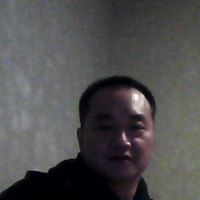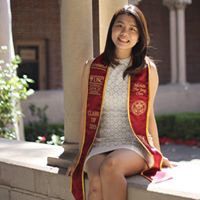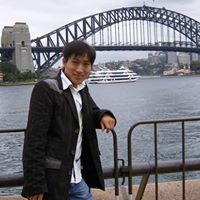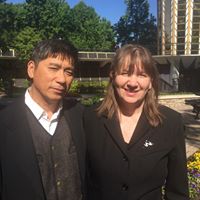Yin Chen
age ~43
from Farragut, TN
- Also known as:
-
- Yi N Chen
- Yin Chzn
- William Thomas
Yin Chen Phones & Addresses
- Farragut, TN
- Fayetteville, NY
- Baldwinsville, NY
- Manvel, TX
- Houston, TX
- Austin, TX
- Anaheim, CA
- 11 Signal Hill Rd, Fayetteville, NY 13066
Us Patents
-
Treatment Of Hsv-Related Pathologies Using Ssdna
view source -
US Patent:7419964, Sep 2, 2008
-
Filed:Dec 6, 2002
-
Appl. No.:10/313828
-
Inventors:Yin Chen - Pearland TX, US
Malcolm Skolnick - Houston TX, US -
Assignee:Cytogenix, inc. - Houston TX
-
International Classification:A01N 43/04
C12Q 1/68
C12N 15/00
C07H 21/02
C07H 21/04 -
US Classification:514 44, 435 6, 435 911, 4353201, 435455, 514 1, 536 231
-
Abstract:A composition for treatment of HSV-related pathologies including an expression vector for altering expression of a target sequence in an HSV-infected cell by production of single-stranded cDNA (ssDNA) in the cell in vivo suspended for topical application to an affected site in a suitable delivery vehicle. The expression vector is comprised of a cassette comprising a sequence of interest, an inverted tandem repeat, and a primer binding site 3′ to the inverted tandem repeat, and a reverse transcriptase/RNAse H coding gene, and is transfected into the infected cells for inhibition of HSV replication. The resulting ssDNA binds to the target sequence to alter expression of the target sequence for such purposes as gene activation or inactivation using duplex or triplex binding of nucleic acids, site-directed mutagenesis, interruption of cellular function by binding to specific cellular proteins, or interfering with RNA splicing functions.
-
In Vivo Ssdna Expression Vectors For Altering Gene Expression
view source -
US Patent:20030082800, May 1, 2003
-
Filed:May 1, 2002
-
Appl. No.:10/136218
-
Inventors:Charles Conrad - Houston TX, US
Yin Chen - Pearland TX, US -
Assignee:CytoGenix, Inc. - Houston TX
-
International Classification:C12N015/00
C12N005/06 -
US Classification:435/325000, 435/320100
-
Abstract:An expression vector for altering expression of a target nucleic acid sequence in a host cell by production of single-stranded cDNA (ssDNA) in the host cell in vivo. The expression vector is comprised of a cassette comprising a sequence of interest, an inverted tandem repeat, and a primer binding site 3′ to the inverted tandem repeat, and a reverse transcriptase/RNAse H coding gene, and may be transfected into the host cell. Transcription of the cassette by the host cell produces an RNA template which is reverse transcribed with the product of the RT coding gene to produce ssDNA of a specified sequence. The ssDNA is modified to remove flanking vector sequences by taking advantage of the “stem-loop” structure of the ssDNA, which forms as a result of the inverted tandem repeat that allows the ssDNA to fold back on itself, forming a double stranded DNA stem. The double-stranded stem may contain one or more restriction endonuclease recognition sites and the loop, which remains as ssDNA, can be any desired nucleotide sequence. This design allows the double-stranded stem of the stem-loop intermediate to be cleaved by the desired corresponding restriction endonuclease(s) and the loop portion is then released as a linearized, single-stranded piece of DNA. The resulting ssDNA binds to an endogenous target nucleic acid sequence to alter the expression of that sequence for such therapeutic purposes as gene activation or inactivation using duplex or triplex binding of nucleic acids, site-directed mutagenesis, interruption of cellular function by binding to specific cellular proteins, or interfering with RNA splicing functions.
-
Identification Of Novel Antibacteria Agents By Screening The Single-Stranded Dna Expression Library
view source -
US Patent:20040248101, Dec 9, 2004
-
Filed:Jun 3, 2003
-
Appl. No.:10/453410
-
Inventors:Yin Chen - Pearland TX, US
Xin Tan - Manvel TX, US -
Assignee:CytoGenix, Inc. - Houston TX
-
International Classification:C12Q001/68
C07H021/04
C12N015/74
C12N001/21 -
US Classification:435/006000, 536/023100, 435/472000, 435/252300
-
Abstract:A selectively inducible, single-stranded DNA (ssDNA) expression library, a method for constructing a ssDNA expression library, a method for screening ssDNA using the expression library, and a method for identifying ssDNA molecules that switch on or off bacterial gene(s) related to cell growth and toxin production and secretion. The screening library is used to, among other things, identify ODNs effective in stopping bacterial growth, killing bacteria or preventing bacteria from synthesizing and secreting their toxins is the focus of the present invention and/or to discover ODNs effective in eukaryotic (e.g., mammalian) cells for targeted gene down regulation. The library is also useful for identifying ssDNAs or ODNs that are used as therapeutic antibacterial reagents, for identifying essential bacterial genes that can serve as targets for antibiotic discovery, and for providing a method for treatment of bacterial infections.
-
Oligodeoxynucleotide Intervention For Prevention And Treatment Of Sepsis
view source -
US Patent:20050020526, Jan 27, 2005
-
Filed:Apr 5, 2004
-
Appl. No.:10/818158
-
Inventors:Yin Chen - Pearland TX, US
Xin Tan - Manvel TX, US -
Assignee:CytoGenix, Inc. - Houston TX
-
International Classification:A61K048/00
C12N015/74
C12N005/08 -
US Classification:514044000, 435366000, 435320100
-
Abstract:A method for producing ODNs in bacterial or fungal cells in vivo for treatment of sepsis so that, when the ODNs reach and knock down their target genes, and thereby kill bacterial or fungal cells or inhibit their growth, the bacterial or fungal accumulation in the bloodstream is held constant or diminished and the sepsis syndrome is reduced or eliminated. The invention also contemplates of certain ODNs for use in treatment of sepsis.
-
Oligodoxynucleotide (Odn) Libraries, Their Use In Screening For Antibacterial Agents, And Catalytic Odn Sequence For Use As An Antibacterial Agent
view source -
US Patent:20050136393, Jun 23, 2005
-
Filed:Dec 23, 2003
-
Appl. No.:10/743956
-
Inventors:Yin Chen - Pearland TX, US
Xin Tan - Manvel TX, US -
Assignee:CytoGenix, Inc. - Houston TX
-
International Classification:C12Q001/00
C12Q001/68
C12N009/22
C12N015/85 -
US Classification:435004000, 435455000, 435199000, 435325000
-
Abstract:A selectively inducible, single-stranded DNA (ssDNA) expression library, a method for constructing a ssDNA expression library, a method for screening ssDNA using the expression library, and a method for identifying ssDNA molecules that alter expression of bacterial gene(s) related to cell growth and toxin production and secretion. The screening library is used to, among other things, identify ODNs effective in stopping bacterial growth, killing bacteria or preventing bacteria from synthesizing and secreting their toxins, and/or to discover ODNs effective in eukaryotic (e.g., mammalian) cells for targeted alteration of gene function. The library is also useful for identifying ssDNAs or ODNs that are used as therapeutic antibacterial reagents, for identifying essential bacterial genes that can serve as targets for antibiotic discovery, and for providing a method for treatment of bacterial infections.
-
In Vivo Ssdna Expression Vectors For Altering Gene Expression
view source -
US Patent:20050260588, Nov 24, 2005
-
Filed:May 1, 2003
-
Appl. No.:10/513191
-
Inventors:Charles Conrad - Houston TX, US
Yin Chen - Pearland TX, US -
International Classification:C12Q001/68
C12P021/06
C12N015/74 -
US Classification:435006000, 435069100, 435320100, 435325000
-
Abstract:An expression vector for altering expression of a target nucleic acid sequence in a host cell by production of single-stranded cDNA (ssDNA) in the host cell in vivo. The expression vector is comprised of a cassette comprising a sequence of interest, an inverted tandem repeat, and a primer binding site 3′ to the inverted tandem repeat, and a reverse transcriptase/RNAse H coding gene, and may be transfected into the host cell. Transcription of the cassette by the host cell produces an RNA template which is reverse transcribed with the product of the RT coding gene to produce ssDNA of a specified sequence. The ssDNA is modified to remove flanking vector sequences by taking advantage of the “stem-loop” structure of the ssDNA, which forms as a result of the inverted tandem repeat that allows the ssDNA to fold back on itself, forming a double stranded DNA stem. The double-stranded stem may contain one or more restriction endonuclease recognition sites and the loop, which remains as ssDNA, can be any desired nucleotide sequence. This design allows the double-stranded stem of the stem-loop intermediate to be cleaved by the desired corresponding restriction endonuclease(s) and the loop portion is then released as a linearized, single-stranded piece of DNA. The resulting ssDNA binds to an endogenous target nucleic acid sequence to alter the expression of that sequence for such therapeutic purposes as gene activation or inactivation using duplex or triplex binding of nucleic acids, site-directed mutagenesis, interruption of cellular function by binding to specific cellular proteins, or interfering with RNA splicing functions.
-
Nucleotides For Prevention And Treatment Of Bacterial And Fungal Pathologies
view source -
US Patent:20070020635, Jan 25, 2007
-
Filed:Jun 3, 2004
-
Appl. No.:10/574254
-
Inventors:Yin Chen - Pearland TX, US
Xin Tan - Manvel TX, US -
Assignee:CytoGenix, Inc. - Houston TX
-
International Classification:C12Q 1/68
C40B 40/02
C40B 40/08
C07H 21/04
A61K 48/00
C12N 15/74 -
US Classification:435006000, 435471000, 435483000, 435252300, 435254200, 536023700, 514044000
-
Abstract:A selectively inducible, single-stranded DNA (ssDNA) expression library, a method for constructing a ssDNA expression library, a method for screening ssDNA using the expression library, and a method for identifying ssDNA molecules that alter expression of bacterial and fungal gene(s) related to cell growth and toxin production and secretion. The screening library is used to, among other things, identify ODNs effective in stopping cell growth, killing bacteria or fungi, or preventing bacteria and/or fungi from synthesizing and secreting their toxins, and/or to discover ODNs effective in eukaryotic (e.g., mammalian) cells for targeted alteration of gene function. The library is also useful for identifying ssDNAs or ODNs that are used as therapeutic agents for, for instance, providing a method for treatment of bacterial infections such as sepsis.
-
Single-Stranded Antimicrobial Oligonucleotides And Uses Thereof
view source -
US Patent:20080206154, Aug 28, 2008
-
Filed:Sep 28, 2005
-
Appl. No.:11/664052
-
Inventors:Yin Chen - Pearland TX, US
Xin Xing Tan - Manvel TX, US -
Assignee:CytoGenix, Inc. - Houston TX
-
International Classification:A61K 31/713
C07H 21/02
C12N 15/66
A61P 31/00
C07H 21/04
C12N 5/00 -
US Classification:424 44, 536 231, 4353201, 435325, 536 237
-
Abstract:The current invention is directed to oligonucleotide sequences isolated from a sequence designated rbl-1 [SEQ ID NO. 19] that either kill or inhibit growth, or prevent the production of endogenously expressed toxin, of microorganisms. These ssDNA sequences, identified through use of a screening method, appear to act as modulators of essential growth functions which may act at the level of triplex formation, antisense inhibition, or as aptamers that alter gene function. The sequences, referred to as minimum functional regions, or MFRs, are useful inter alia as therapeutic agents for treatment of sepsis and other pathologies caused by microorganisms such as sepsis and/or in which microorganisms are contributory agents.
Name / Title
Company / Classification
Phones & Addresses
Manager , Director
Mtt Pharmaceuticals LLC
Mfg Pharmaceutical Preparations · Drugs, Proprietaries, and Sundries · Nonclassifiable Establishments · Whol Drugs/Sundries
Mfg Pharmaceutical Preparations · Drugs, Proprietaries, and Sundries · Nonclassifiable Establishments · Whol Drugs/Sundries
5800 Ranchester Dr, Houston, TX 77036
3630 Morris Farm Dr, Greensboro, NC 27409
3630 Morris Farm Dr, Greensboro, NC 27409
President, Director
CHIN WON SUB CORPORATION
22167 Westheimer Pkwy STE 140, Katy, TX 77450
Resumes

Mathematics Teacher
view sourceWork:
Mathematics Teacher

Yin Lung Chen
view sourceWork:
Restaurante Jia Miao Ming

Yin Choy Chen
view source
Yin Chen
view source
Yin Chen
view source
Yin Chen
view sourceLocation:
United States
Classmates

Yin Chen
view sourceSchools:
Rosary Academy Sparkill NY 1974-1978
Community:
Eugenia Halloran, Annemarie Tobia, David Barone

Yin Chen
view sourceSchools:
St. Timothy's High School Stevenson MD 2006-2010

Yin Chen
view sourceSchools:
Coquitlam College Coquitlam Saudi Arabia 2001-2005
Community:
Leo Tse, Keith Tsing, Ed Pra, Ge Gao, Candy Cheng, Sue Kim

Yin Chen
view sourceSchools:
Aquinas University Legazpi City OR 1982-1986
Community:
Domingo Vicera, Lenibeth Nolasco

Yi Yin Chen | Delaware Va...
view source
Mei Yin Chen | University...
view sourcePlaxo

Yin Chen
view sourceHoustonFounder/President/CEO at MTT Pharmaceuticals Past: CSO/VP of R&D/Chair of SAB at CytoGenix Founder/President/CEO, MTT Pharmaceuticals
Myspace
Youtube
Flickr

Yin Hui Chen
view source
Yin Jung Chen
view source
Yin Cai Chen
view source
Yin Zhu Chen
view source
Yin Chen Chen
view source
Yin Yin Chen
view source
Yin Siong Chen
view source
Yin Chieh Chen
view sourceGoogleplus

Yin Chen
Education:
Boston University - Systems Engineering

Yin Chen

Yin Chen

Yin Chen

Yin Chen

Yin Chen

Yin Chen

Yin Chen
News

Prince Fielder Could End Up Being MLB’s Highest Paid Player in 2020
view source- The only players who could rival Fielders 2020 payday are Wei-Yin Chen, whos owed $22 million from the Marlins, and Jacoby Ellsbury, who was supposed to get $26 million from the Yankees before the team refused to pay it.
- Date: May 14, 2020
- Category: Sports
- Source: Google

The Orioles got stuck in an elevator
view source- It is also the birthday of Wei-Yin Chen (b. 1985) who pitched to a 3.72 ERA from 2012 through 2015 with the Os. Willie Eyre (b. 1978) celebrates as well; he had a 3.44 ERA in 18.1 innings for the 2011 team. Mark Williamson (b. 1959) spent eight seasons on the Baltimore pitching staff from 1987 to 1
- Date: Jul 21, 2018
- Category: Headlines
- Source: Google

Didi hits 2 HRs, Stanton hitless vs Marlins, Yanks romp 12-1
view source- Realmuto, sidelined since bruising his back on March 11, took batting practice and could be activated Tuesday. LHP Wei-Yin Chen (strained left elbow) is to pitch five innings Tuesday for Jupiter in the Class A Florida State League. 3B Martin Prado (strained left hamstring) was to play five inni
- Date: Apr 17, 2018
- Category: Sports
- Source: Google

Darvish to make Cubs debut at Marlins
view source- Last season, he was 2-3 with a 4.01 ERA in 18 appearances, including eight starts. He may not have made the Marlins rotation had it not been for injuries to starters Dan Straily and Wei-Yin Chen, both of whom are reportedly on the mend.
- Date: Mar 31, 2018
- Category: Sports
- Source: Google

Low expectations for Marlins as they open vs. Cubs
view source- matters worse for the Marlins, they have suffered numerous injuries this spring and will be missing starting catcher JT Realmuto and starting third baseman Martin Prado. Other Marlins on the disabled list are starting pitchers Dan Straily and Wei-Yin Chen, reliever Brian Ellington and shortstop JT Riddle.
- Date: Mar 29, 2018
- Category: Sports
- Source: Google

Baseball and Union Point Fingers Over Free-Agent Stalemate
view source- notion: It only takes one. As long as one owner, somewhere, says yes to a players demands, the value of similar players continues to rise. If a league-average starter like Mike Leake signs for five years and $80 million, then so too must another league-average starter, Wei-Yin Chen, a month later.
- Date: Feb 06, 2018
- Category: Sports
- Source: Google

Trading Giancarlo Stanton isn't the end of the Marlins' payroll cuts
view source- This means the Marlins dont have to trade every single one of these players in order to get to their coveted $55 million. So, uh, maybe Wei-Yin Chen will end up sticking around until the trade deadline, if he can prove hes healthy. Or the Marlins can agree to pay for part of his 2019-2020 seasons
- Date: Dec 09, 2017
- Category: Sports
- Source: Google

Edinson Volquez overcomes injury scare, odds to throw MLB's first no-hitter in over a year
view source- the ninth. Unlike Wei-Yin Chen in that start, Volquez kept his pitch count so low that Mattingly, whos often shown an itchy trigger finger when it comes to bringing in relievers in no-hit and perfect game situations once his starters get to triple digits, was never tempted to take him out.
- Date: Jun 04, 2017
- Category: Sports
- Source: Google
Get Report for Yin Chen from Farragut, TN, age ~43


![Can You Hold Me [L.O.R.D.] Yin Chen & Qi Ling Can You Hold Me [L.O.R.D.] Yin Chen & Qi Ling](https://i.ytimg.com/vi/qbzZQK8Vbe0/hq720.jpg?sqp=-oaymwEcCNAFEJQDSFXyq4qpAw4IARUAAIhCGAFwAcABBg==&rs=AOn4CLCXbTD2pnWIpH5i_YzGZGqv6bAb0Q)












